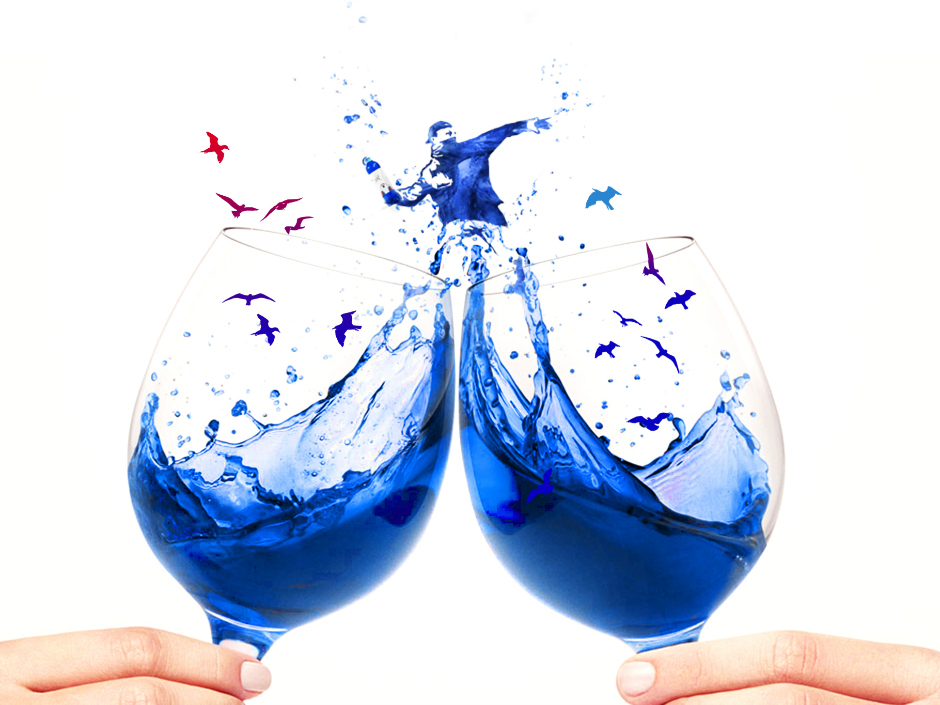I must first confess to having a very simplistic knowledge of wine. I know what I like and what I don’t like. I will not spend a lot of time and money on fancy labels, nor will I indulge in that ridiculous time-wasting drama of ‘someone who knows wine’ – tasting it before it is poured knowingly by the waiter. If the wine is ‘off’, I would send it back. As an alternative, just sniff the cork; it really is that simple, and saves an awful lot of time.
What colour of wine do you prefer? I like white wine during a sunny lunchtime snack and maybe a chilled red during a warm evening. I tend to opt for a Canarian or Spanish wine, mainly out of loyalty to my adopted country, but I guess that my favourites are the island wines, and particularly those from Lanzarote. Now what about a blue wine?
I had the pleasure of trying a blue wine recently. I was initially a little doubtful, but since blue is my favourite colour and it was glowing temptingly in the sunshine, I didn’t hesitate. After the first tentative sip, I knew that I was hooked. Not only did the deep, rich blue colour look amazing, but it suited my palette perfectly. Yes, it was on the sweet side, but it was the kind of sweetness that fits so well on a hot sunny day by the swimming pool or in a bar overlooking the sea.
To many ‘wine connoisseurs’, the very idea of a blue wine is truly a horrific concept, yet it is already made in several Spanish wineries. I am told that blue wine is a mix of mainly white and a little red wine, as well as freshly crushed grape juice. The blue colour is based upon using two pigments, anthocyanin, which is found in the skin of red grapes, and indigo carmine. It is best described as a blend of technology and the best that nature can provide.
I am also told that blue wine has received mixed reviews, including from the Paris ‘Ritz’, who described it as “surprising”. Whether that is ‘surprisingly good’ or ‘surprisingly bad’, I have yet to find out, whilst the UK’s Telegraph referred to it as “a gimmick”, which probably means it is very nice, but they don’t want anyone else to know about it.
Sadly, in Europe the new blue wine has to be labelled as an “alcoholic drink”, since the authorities have decreed that it cannot be a wine, because it is blue, which leaves me very confused about the status of rosé wine.
Enterprising Spanish wineries are now producing a wide range of alternatives to the usual red and white wines. It is now possible to buy a blue, sparkling cava, a red wine that is infused with Earl Grey tea, as well as a white wine that includes a hint of Sencha tea from Japan, which sound challenging.
There is also another newcomer to the range that is red and spicy, called ‘Bastarde’. I am not at all sure about that one, so think I will maintain my loyalty to wines from Lanzarote and the other islands, but I do recommend that you try the blue wine if you get the opportunity.
If you enjoyed this article, take a look at my websites: http://barriemahoney.com and http://thecanaryislander.com or read my latest book, ‘Living in Spain and the Canary Islands’ (ISBN: 9780995602724). Available in paperback, as well as Kindle editions.
Join me on Facebook: @barrie.mahoney
© Barrie.mahoney





